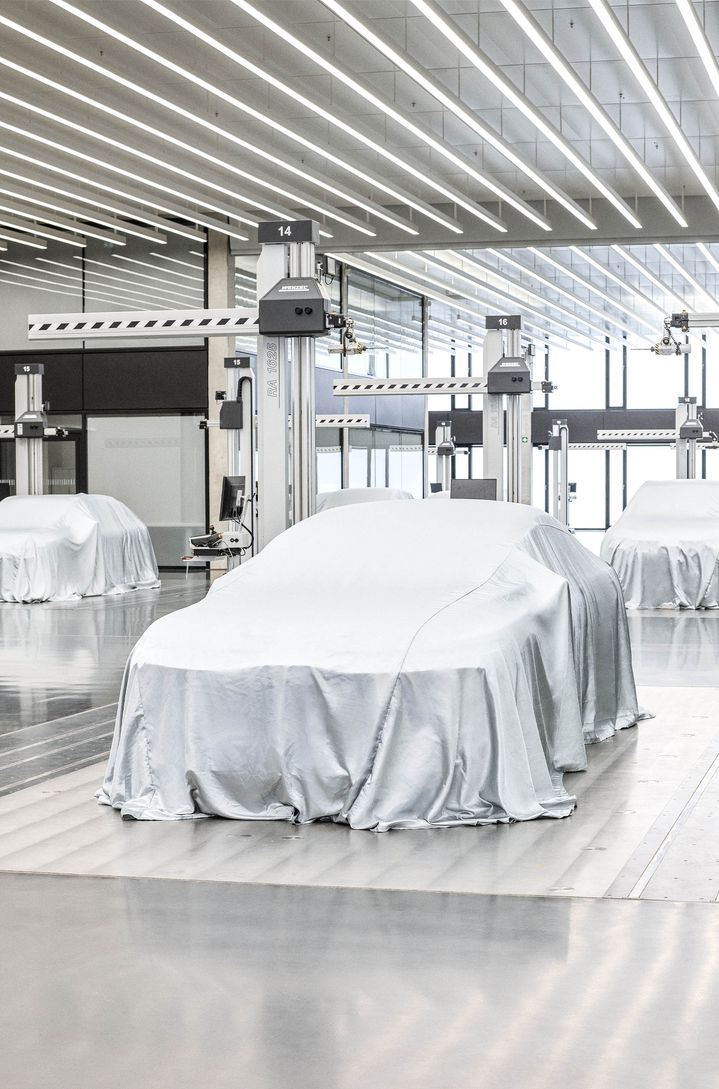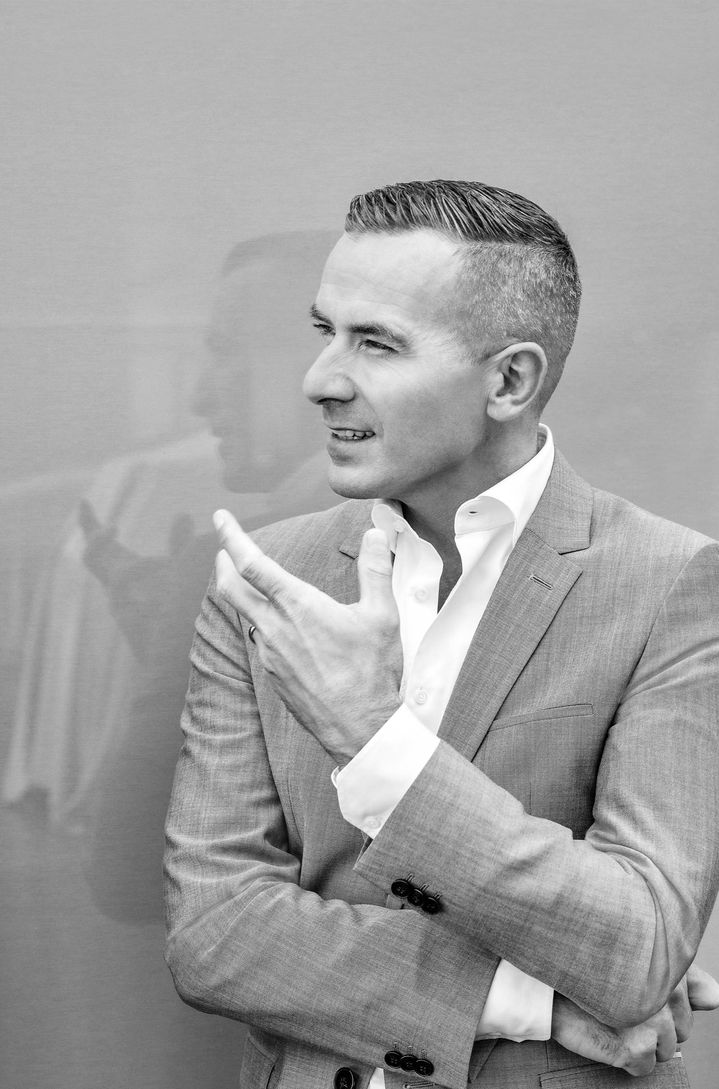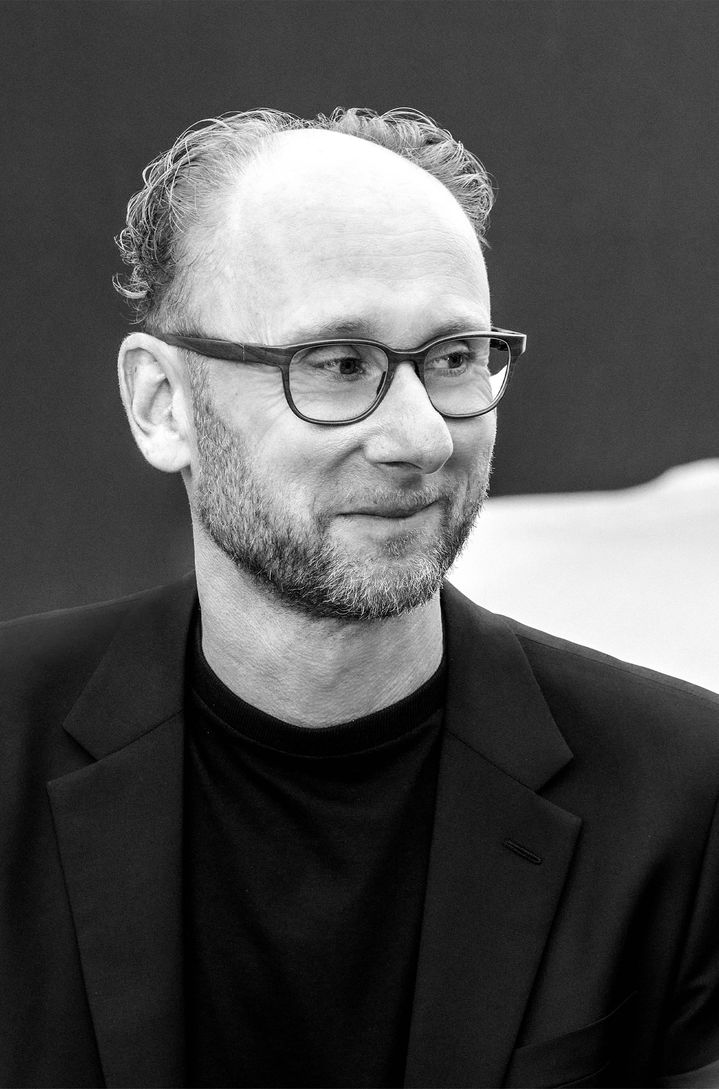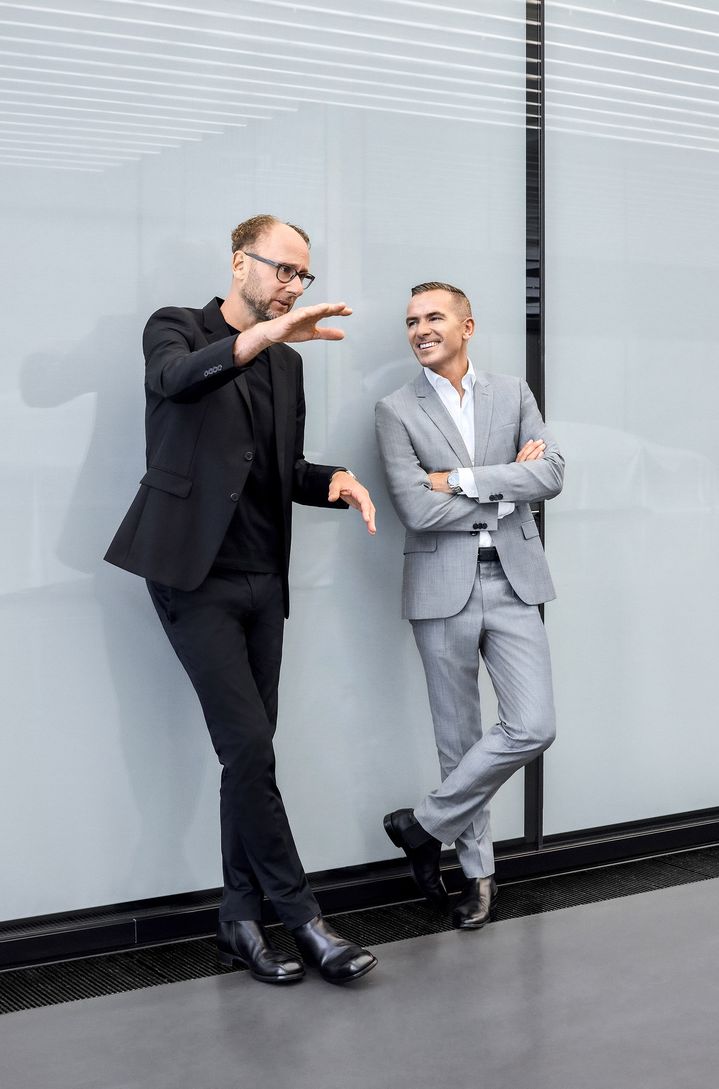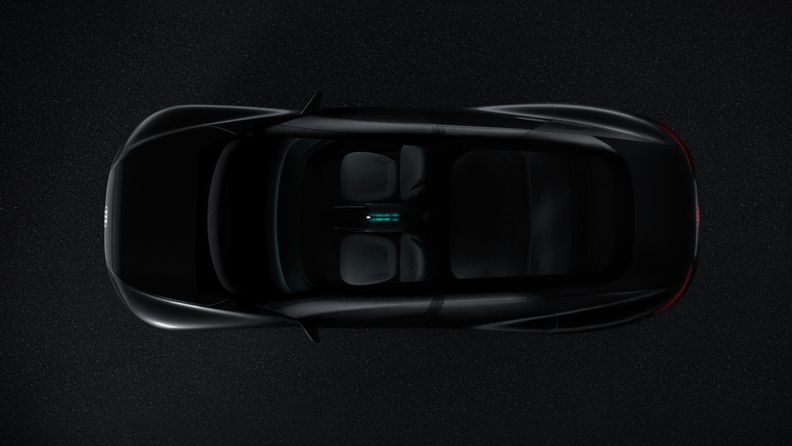“Cars become interactive spaces”
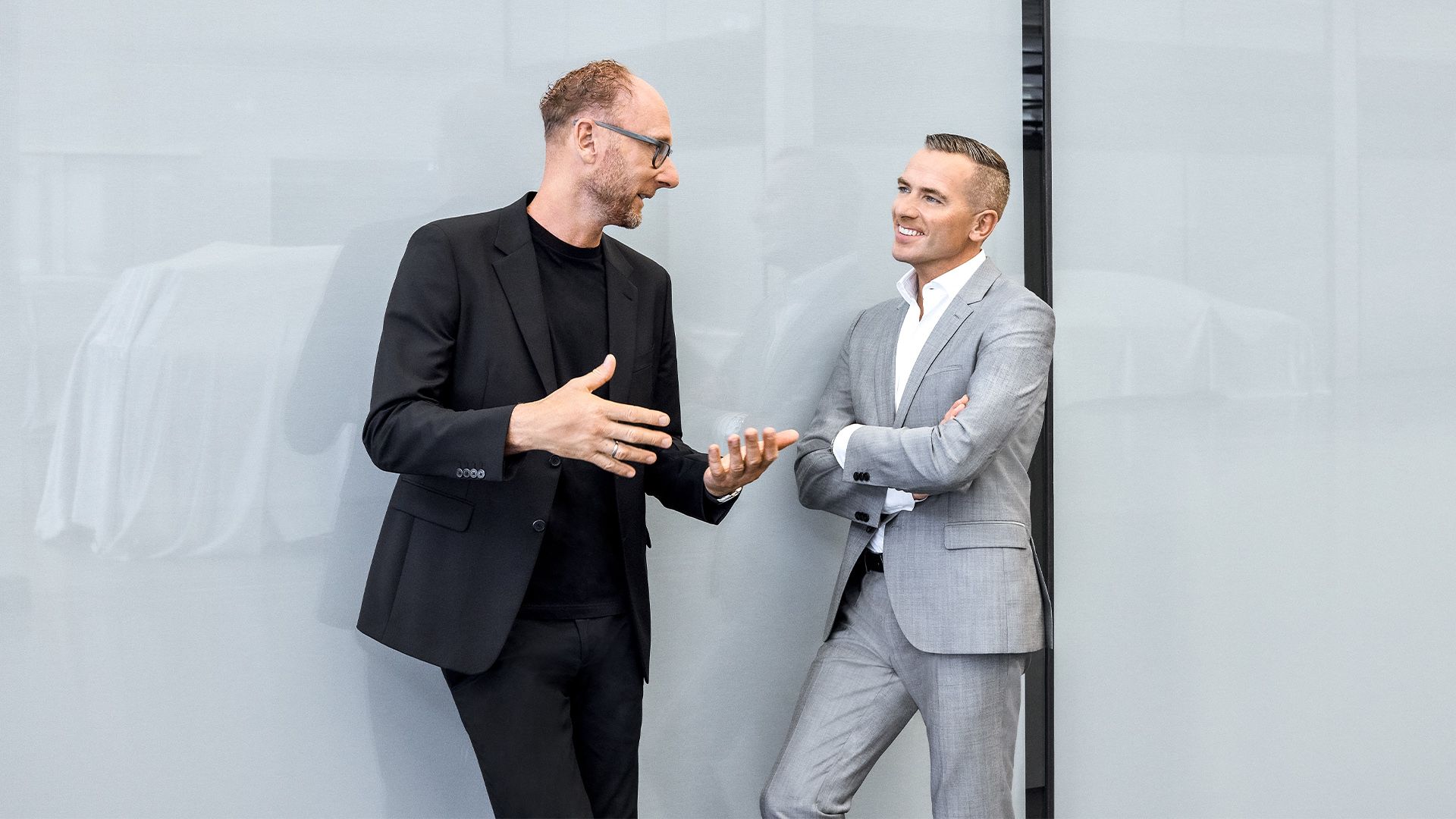
Henrik, you have announced that Audi will be presenting its vision of the future of mobility later this year - with three concept cars that redefine mobility. What will mobility look like in the future?
Henrik Wenders: It will be an exciting experience. Our concept cars show that automobiles are increasingly becoming what we like to call “experience devices”. This means that, looking ahead, it will be possible to do so much more in a car than just drive. Cars will be able to offer a whole range of very different experiences. Going forward, autonomous driving1 may turn the car into a space where occupants can work, relax or meet friends thanks to digital connectivity.
For Audi, these vehicles are meant to herald a whole new automotive era. What makes them unique? What is it about them that hasn’t been done before? What is it that these cars reinvent?
Henrik Wenders: Nothing less than mobility itself. It’s no longer just about traveling from A to B. The focus is on the experiences the car offers occupants while they’re getting there. A 360-degree digital ecosystem will open the way for experiences that go beyond driving and travel. For example, connectivity means that the car knows who my favorite artist is and can arrange an appointment with him.
¹The vehicle shown is a concept vehicle that is not available as a production vehicle. The automated driving functions shown are technologies currently under development, are not available for production vehicles and only work within system limits. All possible uses of the technical systems and functions shown represent only a possible concept and are dependent on the respective legal regulations in the relevant country.
¹The vehicle shown is a concept vehicle that is not available as a production vehicle. The automated driving functions shown are technologies currently under development, are not available for production vehicles and only work within system limits. All possible uses of the technical systems and functions shown represent only a possible concept and are dependent on the respective legal regulations in the relevant country.
“
In the future, progressive luxury will mean the freedom to follow your head or your heart.”
Marc, design is about much more than just form. You say that the three concept cars are an expression of how we are shaping tomorrow today. What does that mean exactly?
Marc Lichte: It means that design is acquiring a new facet. We are no longer just designing the exterior and interior of the vehicle, but the in-car experience as well. Our concept cars offer haptic, optical and sensory experiences that have never been seen in cars before. What does a service feel like? What does the corresponding icon look like? These are questions to which we are already providing answers. We are opening up a whole new world, a creative space that previously did not exist.
Henrik, these concept cars offer unique, high-end experiences. But what does that actually mean in the context of mobility?
Henrik Wenders: Let’s take the Audi skysphere concept², which combines a sports car and a grand tourer. Its variable wheelbase means it’s two cars in one. To me, that’s high end in the best possible way. We’re giving drivers the freedom to choose what type of car they want to drive. This is how we are defining tomorrow’s progressive luxury: the freedom to follow your head or your heart, taking the time to do what is most important to you. Going forward, we may be giving customers this freedom – both through autonomous driving1 and through the digitalisation of our vehicles.
Marc Lichte: Our concept cars are geared to people’s needs. We call it human-centric design. It means being able to operate everything intuitively via innovative interfaces. No one should ever have to puzzle over how to adjust the air-conditioning temperature. It must be instantly obvious.
¹The vehicle shown is a concept vehicle that is not available as a production vehicle. The automated driving functions shown are technologies currently under development, are not available for production vehicles and only work within system limits. All possible uses of the technical systems and functions shown represent only a possible concept and are dependent on the respective legal regulations in the relevant country.
²The vehicles shown here are concept cars that are not available as production models.
¹The vehicle shown is a concept vehicle that is not available as a production vehicle. The automated driving functions shown are technologies currently under development, are not available for production vehicles and only work within system limits. All possible uses of the technical systems and functions shown represent only a possible concept and are dependent on the respective legal regulations in the relevant country.
²The vehicles shown here are concept cars that are not available as production models.
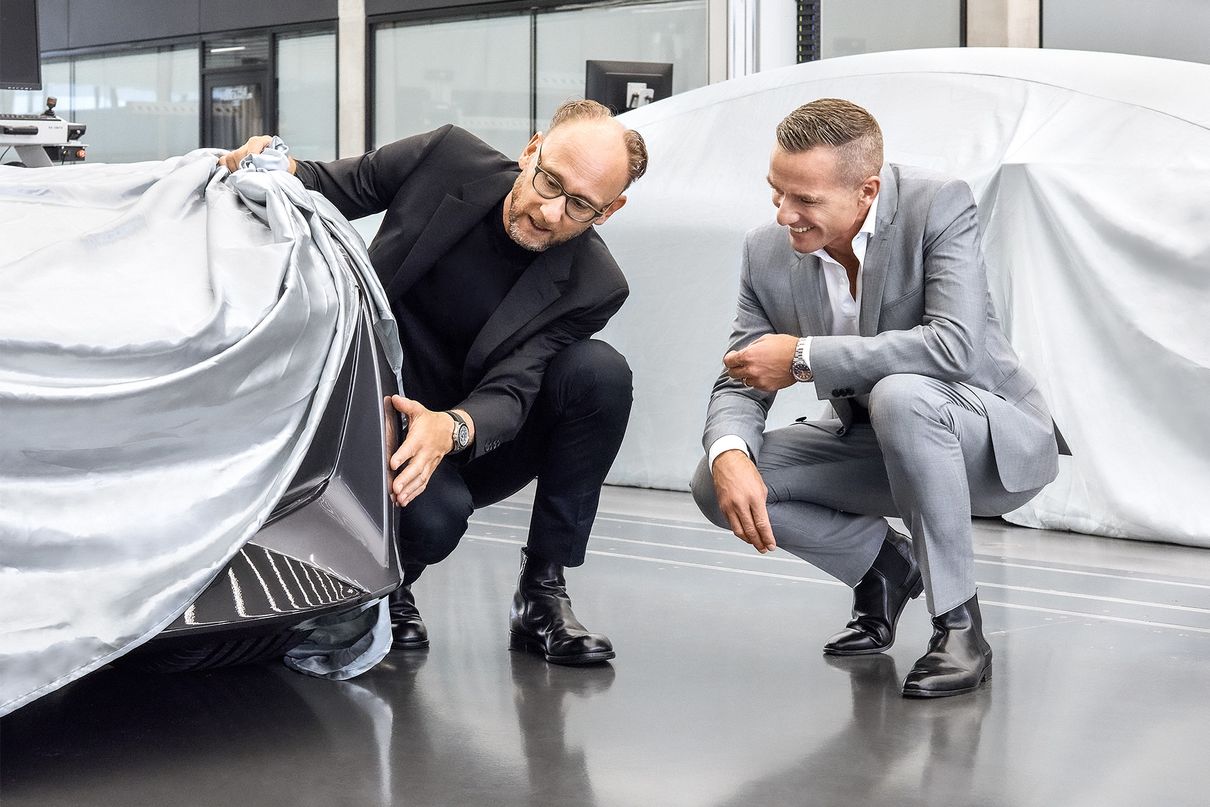
There’s been a lot of discussion about autonomous driving for years but it’s not yet really become a part our everyday lives. How do you see the future of autonomous driving?
Henrik Wenders: Autonomous driving1 is a highly complex technological issue. I’m optimistic that the technology will reach maturity within this decade. Having said that, it remains to be seen whether and how the legislator will play along.
Marc, visions of the future - like those in movies, for example - are often very demanding on the viewer. Does the future have to be unseen, different, when it comes to vehicle design and mobility?
Marc Lichte: I find the visions of the future - for instance, in science fiction movies - very interesting. In principle, they’re no different from what we do. We interpolate the present for the future. Technology has a major role to play in this. The best example is autonomous driving1, which makes it possible to design entirely new car interiors. These will inevitably be different and previously unseen because the applications didn’t exist before. Yet all the concept cars are unmistakably Audi, incorporating refinements of the brand’s signature design elements.
Audi design is always highly emotive. How will tomorrow’s design still be able to touch people’s hearts?
Marc Lichte: By giving them freedom and, of course - and this will never change - by thrilling them. We will continue working to ensure that our customers walk to the garage every morning, looking forward to when the door opens and they see an emotionally designed vehicle that offers them meaningful and inspiring experiences.
Henrik Wenders: Our goal is to position Audi as a brand that represents progressive luxury. Sustainability, digital literacy and networking capabilities are a must. Plus, of course, stunning design.
¹The vehicle shown is a concept vehicle that is not available as a production vehicle. The automated driving functions shown are technologies currently under development, are not available for production vehicles and only work within system limits. All possible uses of the technical systems and functions shown represent only a possible concept and are dependent on the respective legal regulations in the relevant country.
¹The vehicle shown is a concept vehicle that is not available as a production vehicle. The automated driving functions shown are technologies currently under development, are not available for production vehicles and only work within system limits. All possible uses of the technical systems and functions shown represent only a possible concept and are dependent on the respective legal regulations in the relevant country.
“
The new Audi concept cars will be unveiled later this year and early next year, started with the Audi skysphere concept² in August.”
²The vehicles shown here are concept cars that are not available as production models.
²The vehicles shown here are concept cars that are not available as production models.
Credible sustainability is an important aspect for many people, especially in relation to mobility. How do these cars reflect that?
Henrik Wenders: It goes without saying that the three concept cars are fully electric. But our commitment to sustainability goes even further, extending from our suppliers through production to the product itself. Some of the materials we use in the cars are recycled and our aim is to offer production vehicles that are carbon-neutral.
Do these concept cars just showcase ideas of what might be possible or are they the first real tests of how such ideas might actually be implemented?
Marc Lichte: Many of the features, functionalities and experiences we have included in the concept cars will later be transferred to series production. That’s the whole point of concept cars: to explore what’s technically feasible and offer new solutions.
Marc, one last question. You virtually have to anticipate the future in your designs for new cars every time. What fascinates you personally about the future?
Marc Lichte: The fact that it’s up to us to shape it. Embracing that makes it an opportunity. We have the technologies and the ideas to actually make the future better. I find that an incredibly fascinating opportunity.
